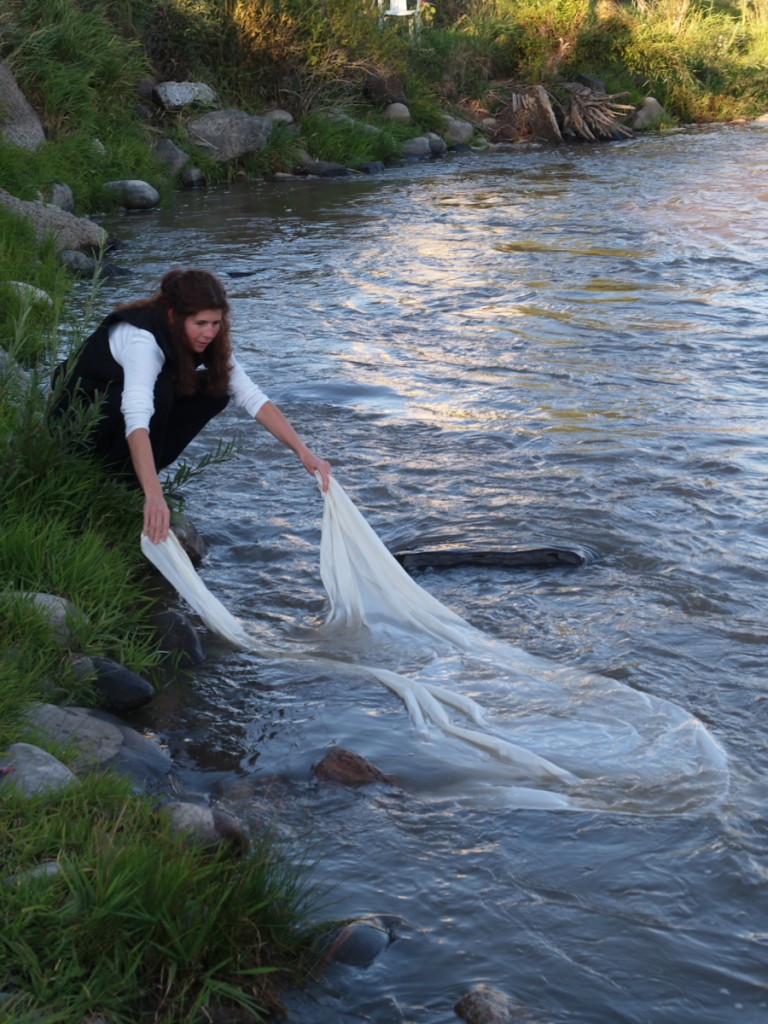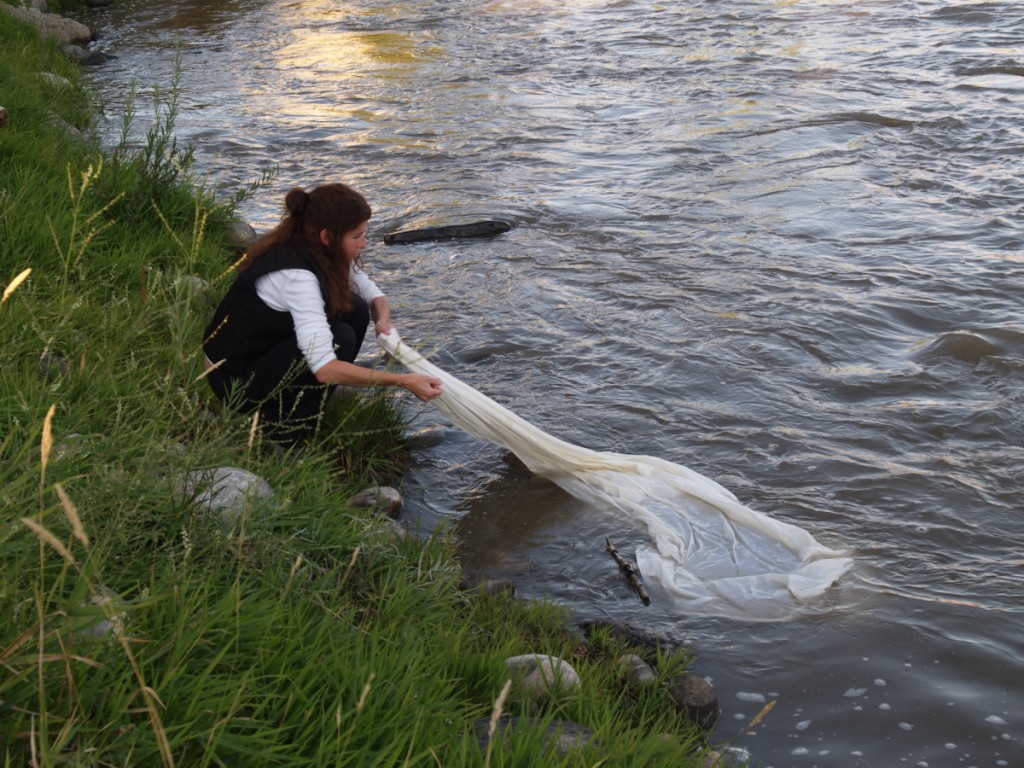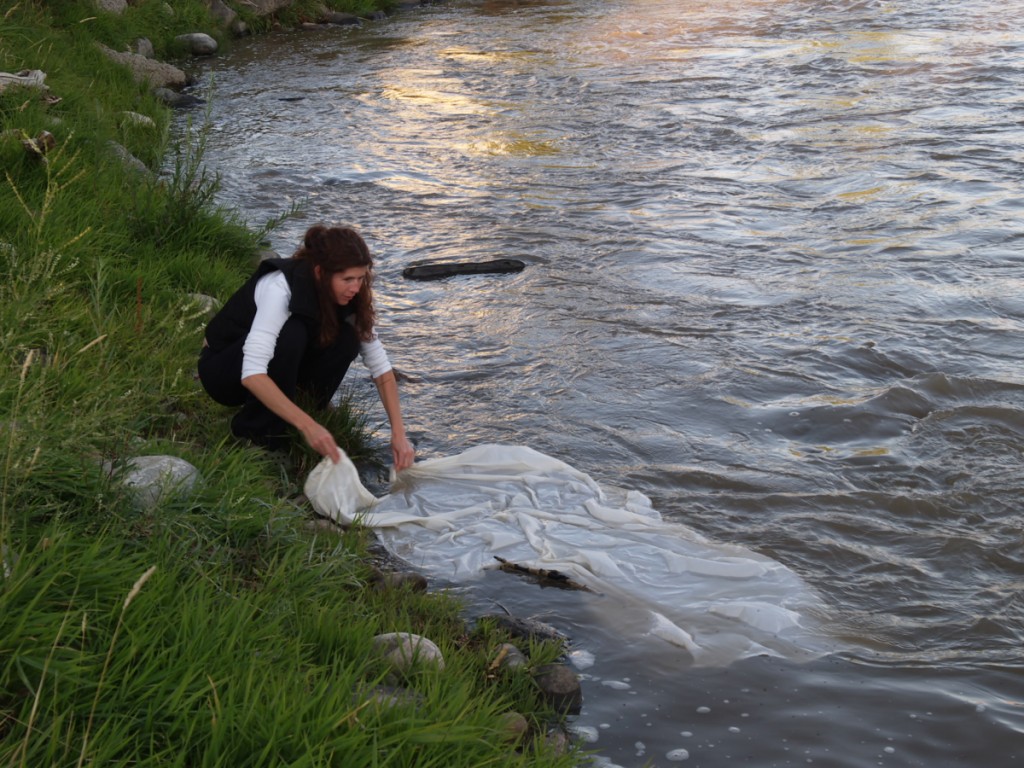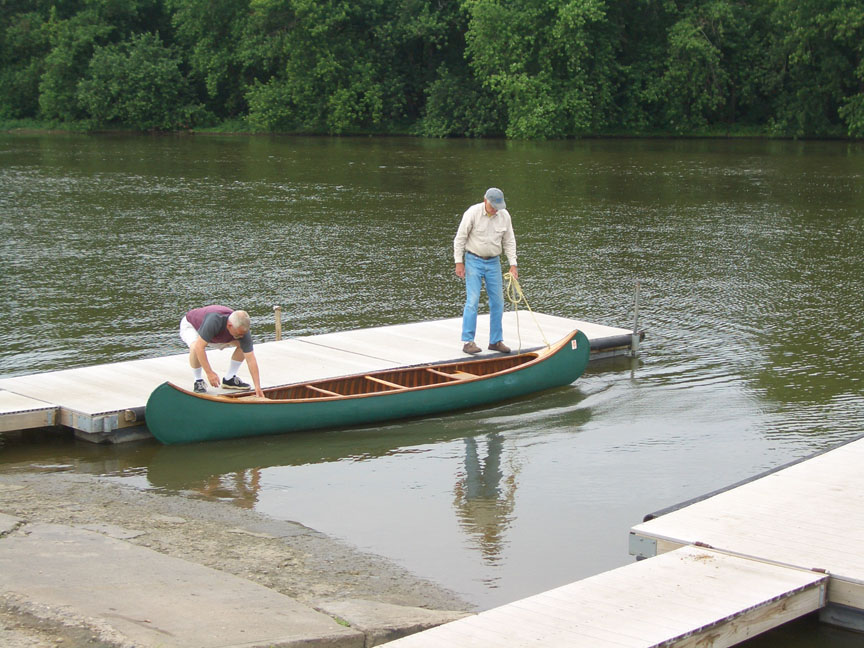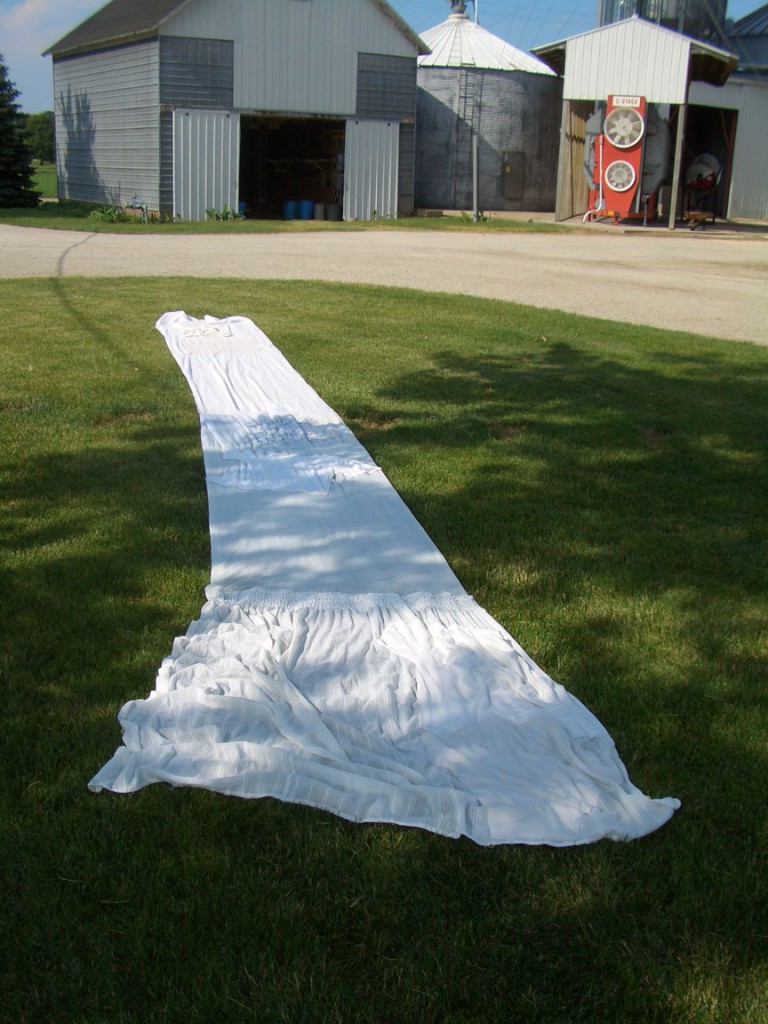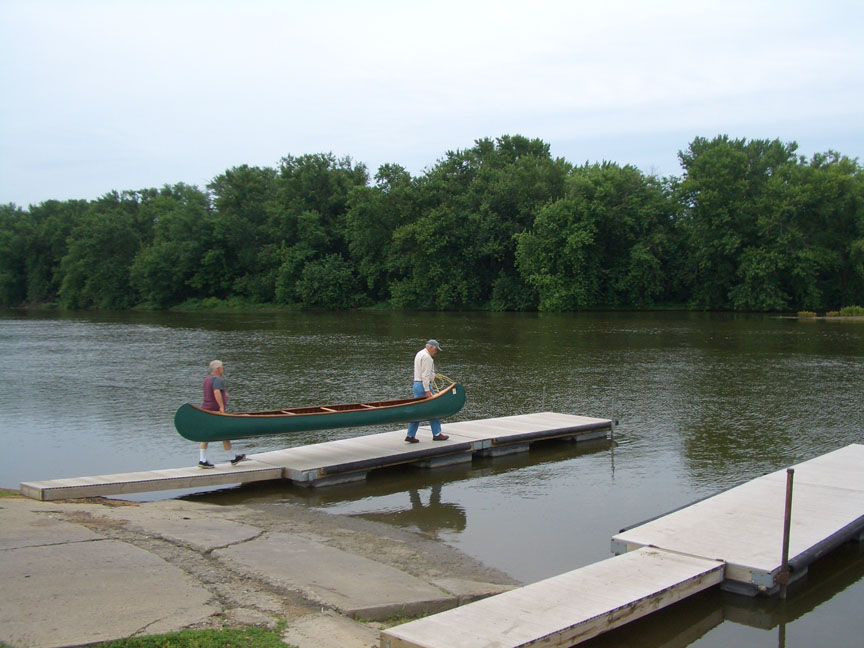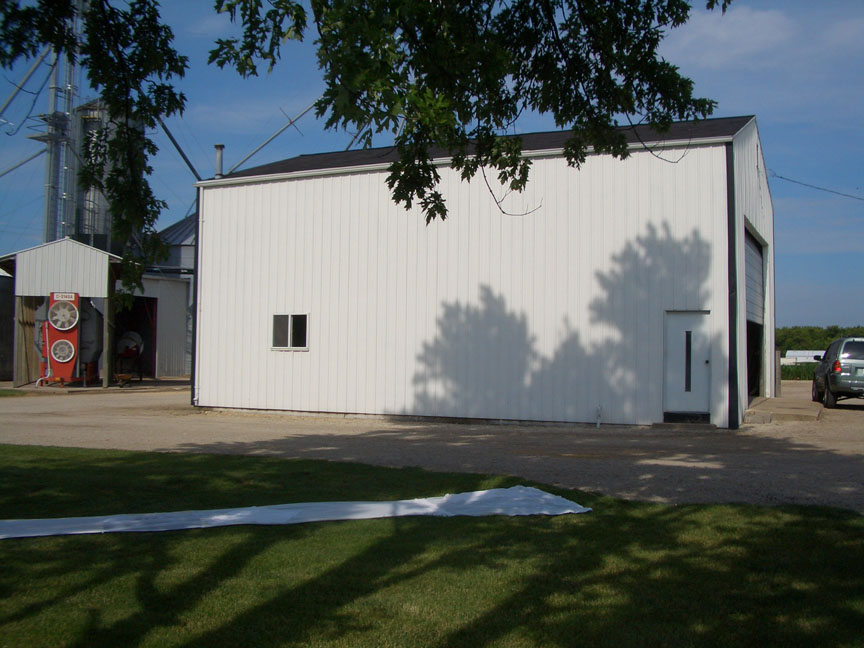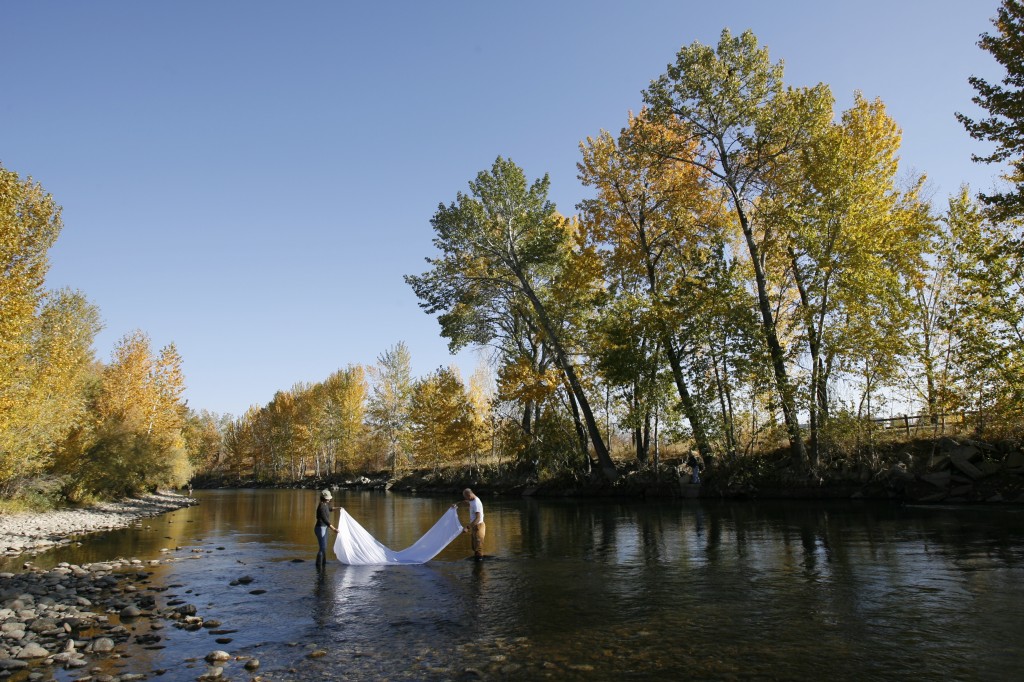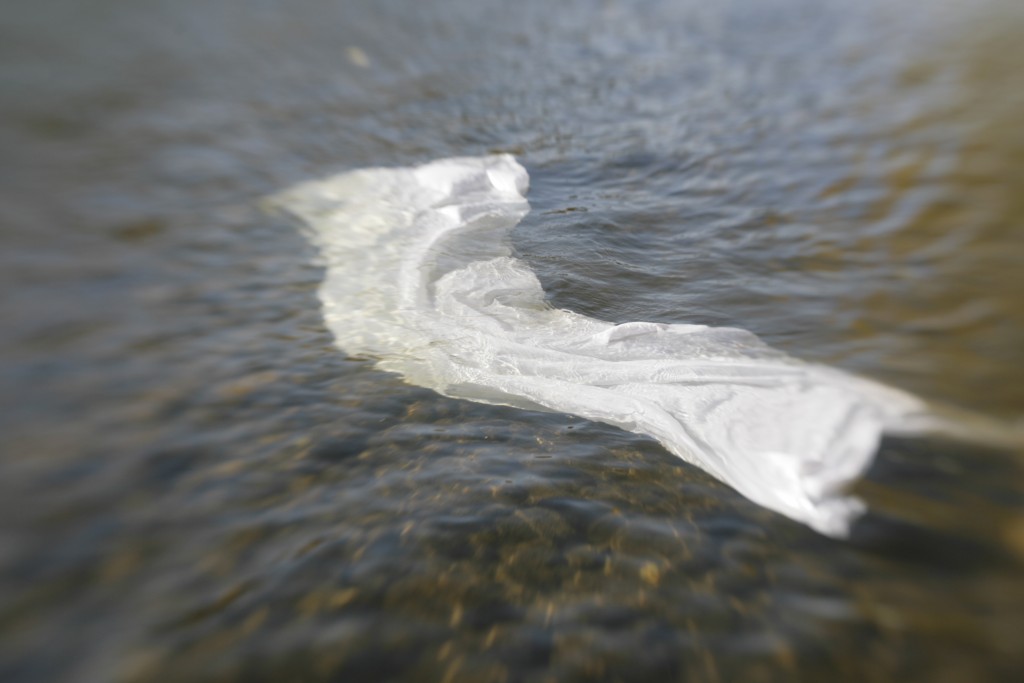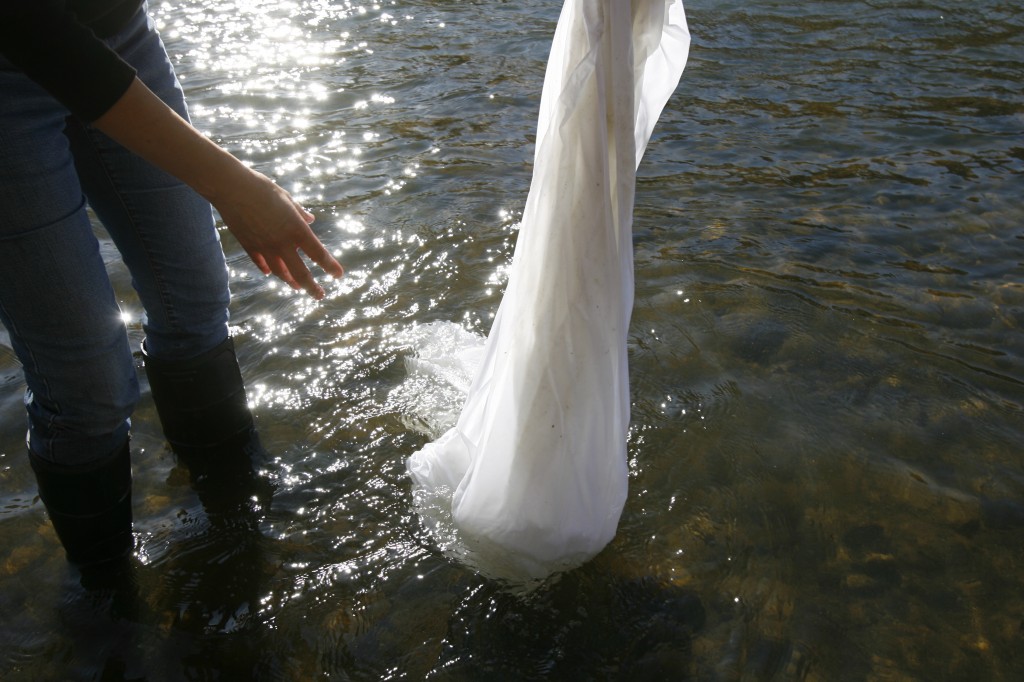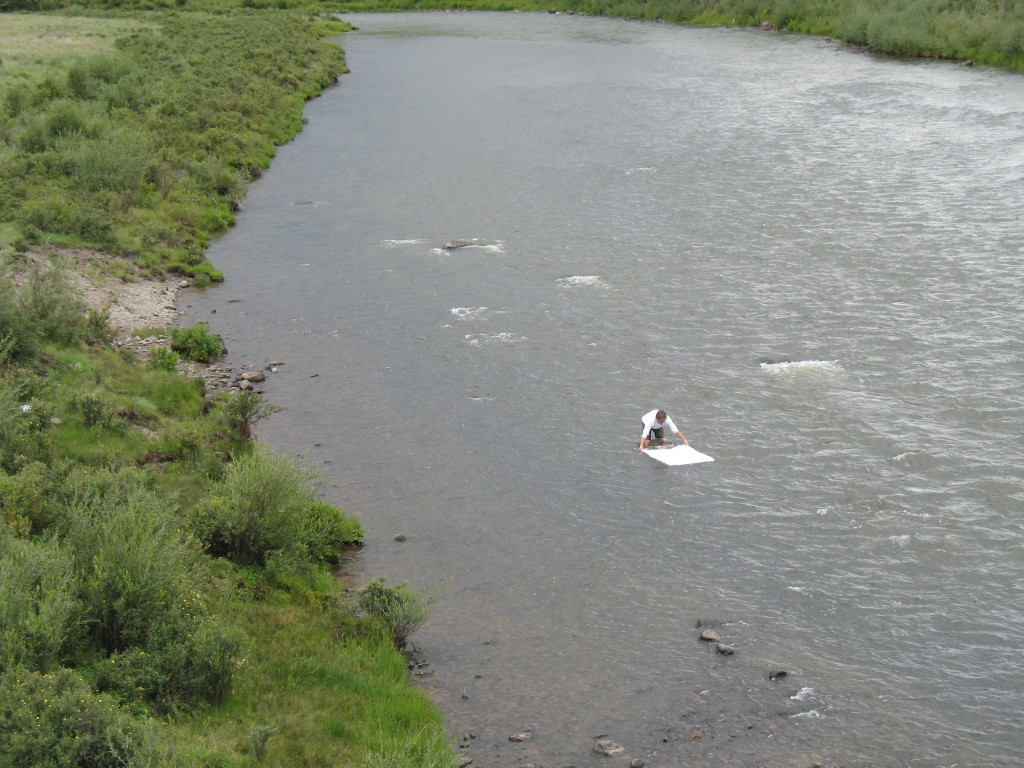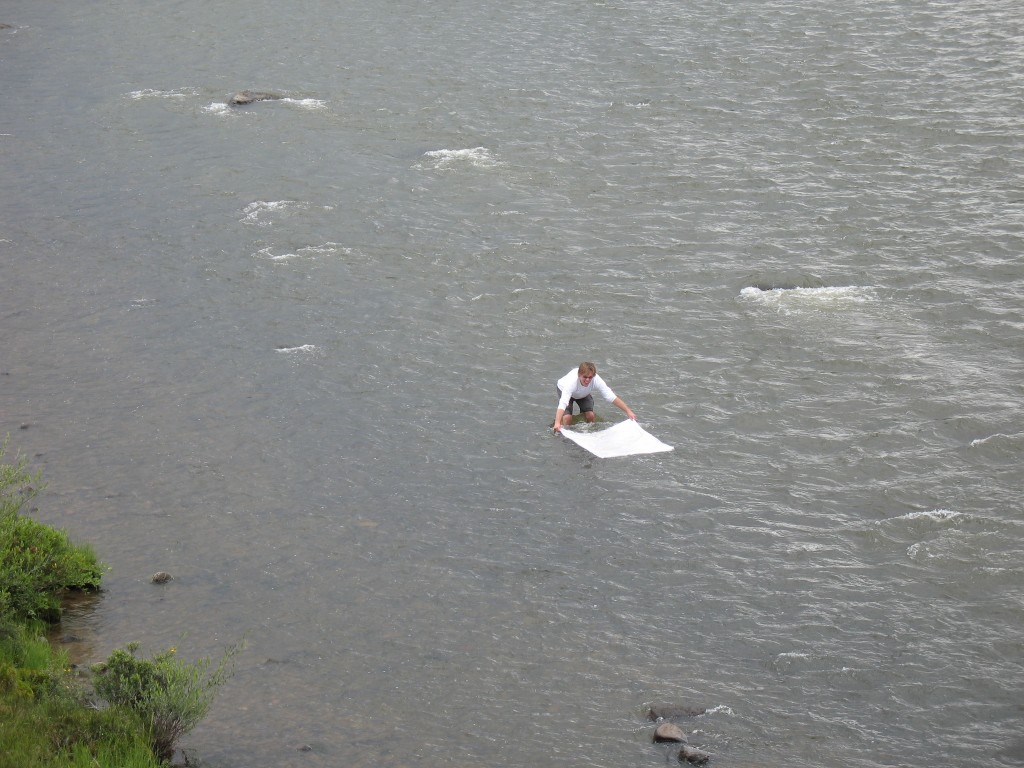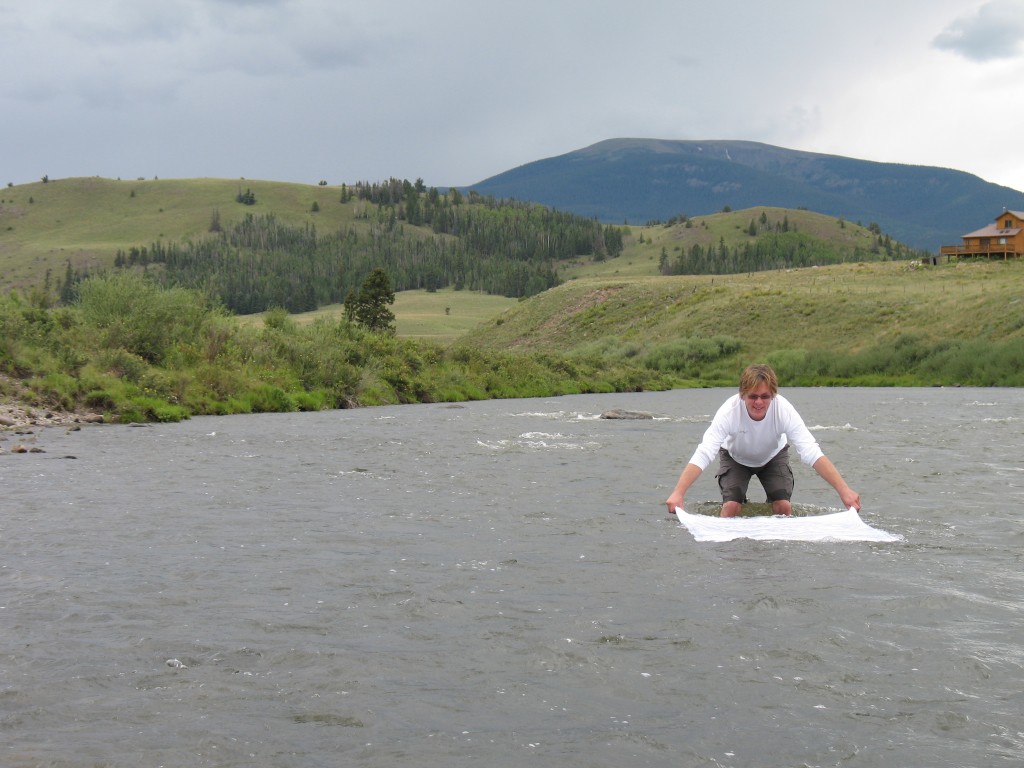Michelle Brooks, now Michelle Lake, honors the river that runs through her backyard in Gypsum. Photography by Tom Thompson.
Tag Archives: USA
Rock River, Illinois, USA
Artist Cathi Bouzide, Doug Wean, Betty and Richard Adams and community friends create a long fabric train of assosrted collected items (aprons, curtains, etc.) and stitched them together for a ride through the river.
Thanks so much! All of the sites look incredible. The white is stunning. What an amazing project. Did you ever think…I am thrilled to have been part of the World Rivers Project; the speaking of it; the assembly of white things from people’s homes; the preparation; the act of the cloth in the river and the drying of the fabric were all a big part of my residency that week. Many are aware of the agricultural run off into the rivers, lakes, and ponds of our world. When I visit Oregon (four years this year) there are many difficult topics touched on lightly through discussion in addition to the art we make. Facilitating a World Rivers experience in a largely agricultural region was brave for me. The images I shared of the experience speak to the unsaid words and connections that World Rivers brought for me and the people of Oregon, IL. Thanks for that Lee. — Cathi
Bosie River, Bosie, Idaho
Katherine Jones (photographer), Glenn Oakley, Don Gura and Vida Lietuvninkas enjoy an outing in nature that is close to home.
Idaho has many rivers in its vast wilderness – and flowing right through downtown Boise. These photos were taken very near the downtown area. My awareness of rivers changed when I moved from Chicago to Boise. In Chicago, it hardly seemed “natural”.
Rio Grande, Colorado, USA
Artist, Mark Penner-Howell, with photography by Kae Penner-Howell, uses a piece of cotton canvas in the headwaters of the Rio Grande near Creede, Colorado.
The Rio Grande begins as alpine run-off high in the San Juan mountains of Southern Colorado. For hundreds of miles this clear and cold stream wanders through national forests and high desert grasslands. Numerous tributaries in the mountain high country quickly add to the river’s strength. Over millions of years the Rio Grande has carved tremendous, rugged canyons through the heart of the American west. The lower sections of the river find it silt-laden and slowly winding its way to the ocean, nearly 3034 km from it’s origin.
The Rio Grande provides sustenance and respite to migrating birds, desert wildlife, and human populations alike. It remains largely unused by commercial water traffic because it is too shallow.
Recently, growing populations in the region have put formidable pressure on this life resource. Effluent waste from human communities and pesticides from farm run-off compromise the river’s health. In the stretches below El Paso Texas, more water is drawn from the river for human use than is sustainable for the life of river.
The origins of this Rio Grande, it’s course over land and throughout history, and the perils it faces in the industrialized present are well documented and parallel the story of many great rivers. What makes this river special to me is the time I have spent along it’s riparian banks, above it on cliffs, beside it in a mountain cabin. It’s magnetism to both native wildlife and the people of the region stand in stark contrast to the severe beauty and harsh demands of the desert it flows through. I am fascinated with these things and, most of all, the ineffable lure of water flowing over rocks.
